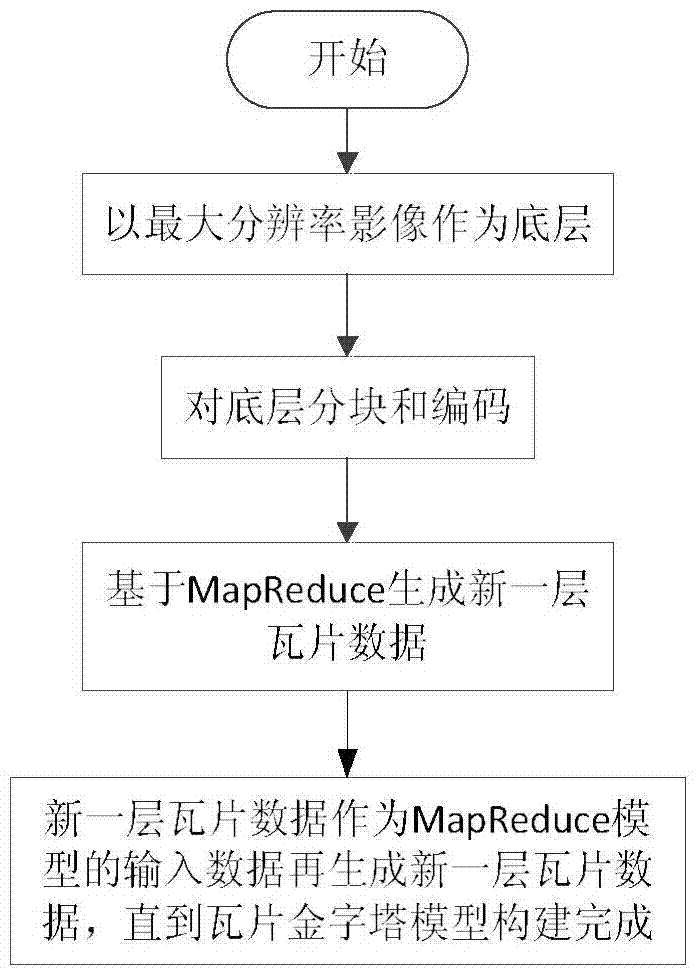A tile pyramid parallel construction method based on mapreduce
A technology of tile pyramid and construction method, applied in image data processing, instruments, image data processing and other directions, can solve problems such as low efficiency, single node limitation bottleneck, long time, etc., and achieve the effect of high efficiency and good scalability
- Summary
- Abstract
- Description
- Claims
- Application Information
AI Technical Summary
Problems solved by technology
Method used
Image
Examples
Embodiment
[0021] Embodiment: The MapReduce used in this patent is a parallel computing model proposed by Google in 2004 and applied to large-scale clusters for data processing, and it is also the core computing model of cloud computing at present.
[0022] Such as figure 1 As shown, a tile pyramid parallel construction method based on MapReduce includes the following steps:
[0023] Step 10: Use the maximum resolution image as the bottom layer of the pyramid;
[0024] Step 20: Divide the bottom layer into blocks, and encode the divided image blocks; wherein, the image is divided into blocks by using quadtree segmentation. The grid-based and Hilbert encoding method is used to encode the divided image tiles; the number of each image tile is composed of zoom level Z, Hilbert encoding, tile column number and tile row number.
[0025] Step 30: Input the image block data encoded in blocks in step 20 into the MapReduce model to generate a new layer of tile data;
[0026] Step 40: Use the ti...
PUM
 Login to View More
Login to View More Abstract
Description
Claims
Application Information
 Login to View More
Login to View More - R&D
- Intellectual Property
- Life Sciences
- Materials
- Tech Scout
- Unparalleled Data Quality
- Higher Quality Content
- 60% Fewer Hallucinations
Browse by: Latest US Patents, China's latest patents, Technical Efficacy Thesaurus, Application Domain, Technology Topic, Popular Technical Reports.
© 2025 PatSnap. All rights reserved.Legal|Privacy policy|Modern Slavery Act Transparency Statement|Sitemap|About US| Contact US: help@patsnap.com



